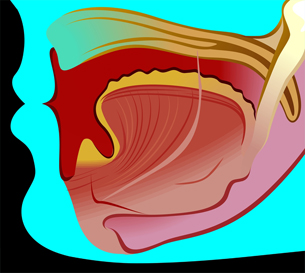Module 1
1. Module 1
1.20. Page 2
Module 1—The Nervous System
 Explore
Explore
 Read
Read

© tillydesign/shutterstock
You can undoubtedly name the five basic senses that allow you to gather information about your environment—sight, smell, touch, hearing, and taste. To begin this lesson, read pages 406 to 409 in the textbook to explore the special type of cells, sensory receptors, that respond to stimulation from the environment. You may choose to summarize the information from your reading in notes, a concept organizer, a chart, a diagram, or a podcast. Store your work in your course folder.
The senses are classified by the type of energy that stimulates the sensory receptors. You will discover how each sense has unique receptors for detecting changes. Types of sensory receptors include photoreceptors, mechanoreceptors, chemoreceptors, osmoreceptors, and thermoreceptors. These special nerve endings—or specialized nerve cells—convert the energy stimulus into electrochemical energy, a nerve impulse. You will study the electrochemical transmission of nerve impulses in Lesson 7 of this module.
senses: specialized mechanisms or functions by which an organism is receptive and responsive to a certain class of stimuli, which are typically external (as in the senses of sight, hearing, touch, and pain) but also may be internal (as in sensing the temperature of the blood or the levels of carbon dioxide)
sensory receptor: a cell or a group of cells that is specialized to receive stimuli that provide information about the body’s external conditions (through sight, hearing, taste, smell, or touch) and internal conditions (such as temperature, pH, glucose levels, and blood pressure)
photoreceptor: a sensory receptor that responds to light stimuli, allowing people to see images and colours
mechanoreceptor: a sensory receptor that detects physical deformations in the body’s environment associated with pressure, touch, stretch, motion, and sound
chemoreceptor: a sensory receptor that transmits information about the solute concentration in a solution or about individual kinds of molecules in solution
osmoreceptor: a sensory receptor that detects changes in osmotic pressure, pressure due to water movement
thermoreceptor: a sensory receptor that detects heat or cold
sensation: the reception and processing by the brain of a nerve impulse sent by an activated sensory receptor
perception: the interpretation of sensory information by the cerebral cortex
These changes, called sensations, are communicated to specific areas of your brain, including the occipital, temporal, parietal, or frontal lobes of the cerebrum; the hypothalamus; and the cerebellum. Your brain and your friend’s brain don’t interpret information the same way. Your interpretations are based on your unique experiences. These differing interpretations result in different perceptions.
 Try This
Try This

© Glenn Frank/iStockphoto
TR 1. Prepare three bowls of water—one with ice water, one with water at room temperature, and one with water as hot as you would prepare it for a bath. Put one hand in the ice water for several minutes; then put it into the water that is at room temperature. How does the water at room temperature feel in comparison to the ice water? Put the other hand into the bowl with the hot water for several minutes. Now put this hand into the water at room temperature. How does the water at room temperature feel in comparison to the hot water, and how does it compare to what you felt after putting your hand in the ice water? Did the temperature feel different? Was your perception of the water at room temperature different after the immersion of your hand in the ice water and the hot water?
After holding your hand in ice water for several minutes, the pain of the cold does not seem so excruciating. If the sensory receptors are repeatedly stimulated, sensory adaptation occurs—this is why factory workers no longer notice the hum of machinery after working for a period of time. If you worked at a feedlot, do you think you would get used to the smell of the animals and their manure to the point where you would no longer notice the odour? Sometimes the brain perceives information differently from the sensory information it receives. This is called an illusion. Look at “Figure 12.4” on page 408 of your textbook for examples of optical illusions.